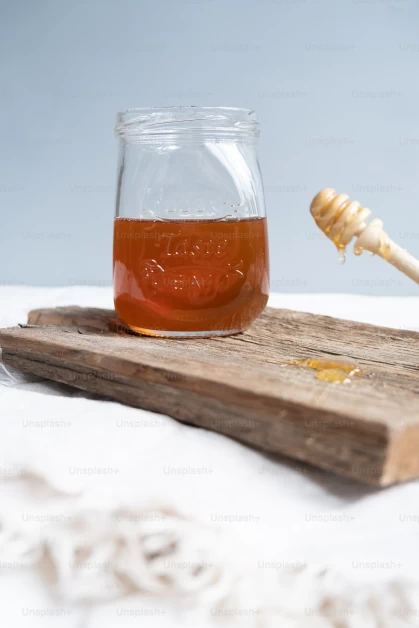Table of Contents
Introduction
Manuka honey, pronounced “MAH-nooka,” is a type of honey that originates from New Zealand. It is produced by bees that gather nectar and pollen from the manuka bush. Manuka honey offers various health benefits, including antibacterial properties and wound healing abilities. It is a versatile product used in cosmetics and foods. In this article, we will explore the many uses and benefits of manuka honey.
Antibacterial Properties
Manuka honey is renowned for its antibacterial effects, which help prevent the growth and spread of bacteria. The strength of manuka honey’s antibacterial properties is measured by its Unique Manuka Factor (UMF). The UMF grading system rates each batch of honey on a scale of 5 to 25, with higher UMF numbers indicating stronger antibacterial properties. The UMF is determined by the levels of three compounds found naturally in manuka honey: DHA, leptisperin, and methylglyoxal (MGO).
Wound Healing
Medical-grade manuka honey can be used to treat surface burns and wounds due to its anti-inflammatory and antibacterial properties. The antioxidants, flavonoids, and phenolic acids present in manuka honey contribute to its anti-inflammatory effects. These properties help promote wound healing and reduce inflammation.
Antiviral Properties
Research suggests that manuka honey may also have antiviral properties. While the antibacterial effects of MGO in manuka honey are well-known, it has also been found to inhibit the growth of viruses. However, further research is needed to fully understand the extent of manuka honey’s antiviral effects.
Oral Health
A small study examined the effects of manuka honey following periodontal therapy, a treatment for gum disease. The participants’ mouths were divided into two sides, with one side treated with manuka honey and hydrogen peroxide, and the other side receiving no treatment. Over time, the researchers observed some improvement in ligament-tooth attachment in the honey-treated side. However, it is important to note that the study had limited participants, and the effects could not be solely attributed to the honey.
Cold Symptom Relief
Manuka honey can provide relief for cold symptoms such as coughing or a sore throat. It can be consumed directly or used in the form of lozenges or lollipops.
Nutrition of Manuka Honey
One tablespoon of manuka honey contains the following:
- Calories: 72 calories
- Fat: 0 grams
- Sodium: 0 milligrams
- Carbohydrates: 17 grams
- Added Sugars: 16 grams
- Protein: 0 grams
Risks of Manuka Honey
If you are watching your intake of added sugars, it is advisable to consume manuka honey in limited quantities. Some types of manuka honey contain 17 grams of carbs in just one teaspoon, with 16 grams of sugar.
Individuals with bee allergies should exercise caution when using manuka honey, as allergic reactions to honey are possible. It is important to remember that any food can potentially be an allergen.
How to Use Manuka Honey
There is no official recommended dose for manuka honey. However, it is recommended to follow the instructions provided on the packaging.
Manuka honey can be used in the same way as regular honey. Here are a few ways to incorporate it into your daily routine:
- Add it to tea or cereal as a sweetener.
- Drizzle it on desserts.
- Spread it on toast.
- Use it in smoothies.
Manuka honey is also used as an ingredient in various cosmetic products, such as skincare and haircare products. It can also be directly applied to the skin.
To ensure you are purchasing certified manuka honey, you can visit the website of the UMF Honey Association. They provide a list of brands that sell certified manuka honey. Additionally, you can look for products containing certified manuka honey on the same site.
Side Effects of Manuka Honey
While manuka honey offers numerous benefits, it may also have some side effects, including:
- A burning sensation when applied to the skin.
- Dehydrated tissue in individuals with diabetes.
- Increased blood sugar levels.
In conclusion, manuka honey is a versatile product with various health benefits. It has antibacterial, wound healing, and potentially antiviral properties. It can also contribute to oral health and provide relief for cold symptoms. However, it is important to use manuka honey in moderation, especially for individuals watching their sugar intake. People with bee allergies should exercise caution. Manuka honey can be consumed as a food or used in cosmetic products. Remember to follow the instructions on the packaging and consult a healthcare professional if you have any concerns.

